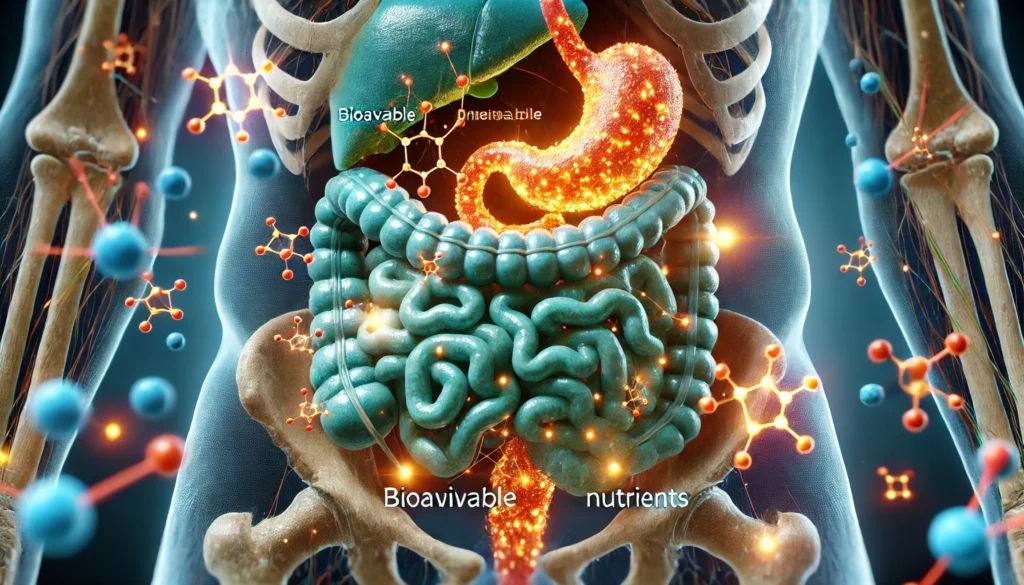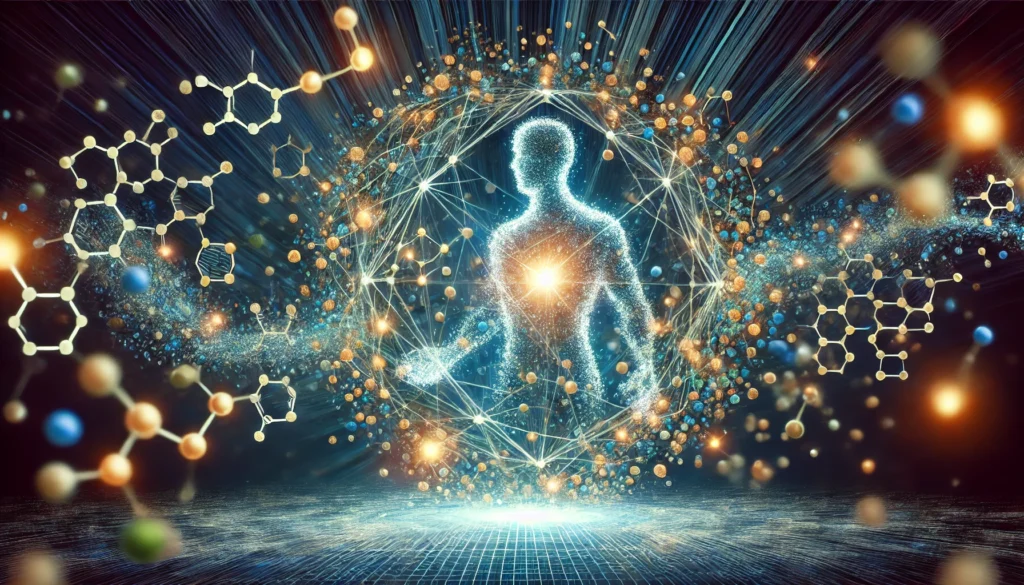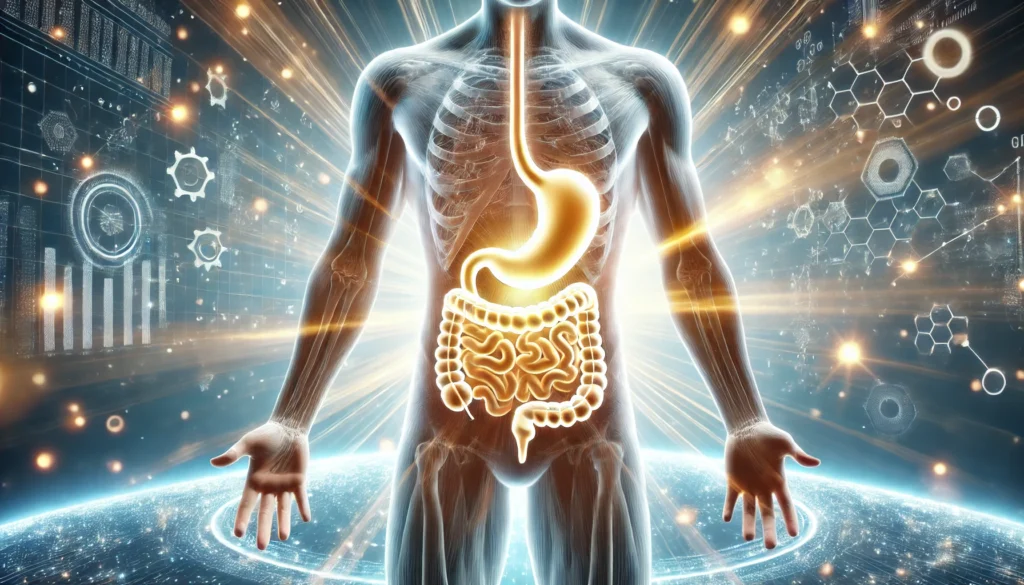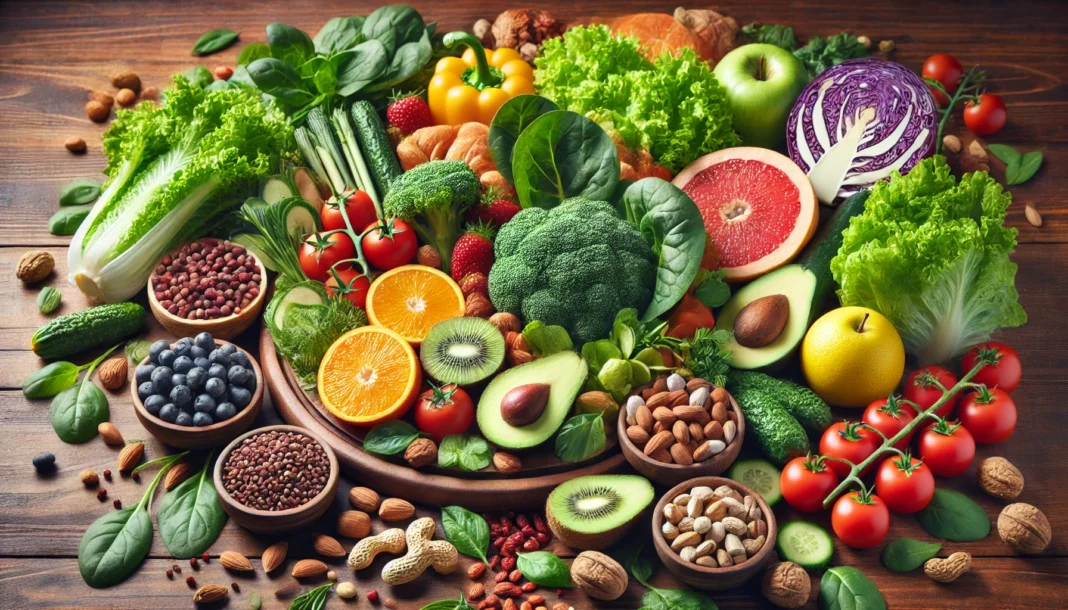Understanding Bioavailability in Nutrition
Bioavailability in nutrition refers to the extent and rate at which nutrients from food are absorbed into the bloodstream and utilized by the body. The efficiency of nutrient absorption depends on various physiological, dietary, and environmental factors, making bioavailability a critical aspect of human nutrition. Understanding what is bioavailability in nutrition helps individuals optimize their diets for better health and wellness. Different foods and preparation methods influence how much of a nutrient is available for bodily functions, impacting everything from energy levels to immune system strength. Without a clear grasp of bioavailability, even a nutrient-rich diet may fail to provide essential health benefits.
You may also like: How to Improve Nutrient Absorption: Unlock the Benefits of Bioavailable Nutrients for Holistic Wellness
The body’s ability to absorb and use nutrients is influenced by solubility, digestive efficiency, and biochemical interactions. For instance, fat-soluble vitamins require dietary fat for absorption, whereas some minerals compete for absorption in the gut. Learning what is bioavailability food entails recognizing that nutrient availability is not merely about intake but also about optimizing factors that enhance absorption. Proper food combinations, cooking methods, and gut health play integral roles in maximizing the bioavailability of nutrients. Consequently, focusing on bioavailability nutrients rather than just nutrient content ensures that dietary choices support overall health.

How Does Bioavailability Relate to the 6 Essential Nutrients?
To understand how does bioavailability relate to the 6 essential nutrients, it is crucial to examine each category—carbohydrates, proteins, fats, vitamins, minerals, and water. Carbohydrates, for instance, vary in bioavailability depending on their fiber content, with refined carbohydrates offering rapid absorption but lower nutrient value compared to complex carbohydrates. Protein bioavailability depends on amino acid composition, with animal-based proteins generally more bioavailable than plant-based alternatives. Fats play a crucial role in the absorption of fat-soluble vitamins such as A, D, E, and K, demonstrating the importance of dietary fat in nutrient bioavailability.
Vitamins and minerals also exhibit variable bioavailability based on food sources and inhibitors. For example, vitamin C enhances iron absorption from plant-based sources, making it a valuable pairing for individuals relying on non-heme iron. Conversely, substances like oxalates and phytates found in certain vegetables and grains can inhibit mineral absorption, reducing bioavailability. Water, often overlooked, is essential for transporting nutrients throughout the body and ensuring proper metabolic function. Recognizing the factors influencing how does bioavailability relate to the 6 essential nutrients enables individuals to make informed dietary choices for optimal nutrient uptake.
Factors That Influence Bioavailability Nutrients
Several key factors determine bioavailability nutrients, including food composition, preparation methods, and individual digestive health. Cooking techniques can enhance or reduce bioavailability, with some nutrients becoming more accessible through heat exposure while others degrade. For instance, lightly steaming vegetables can improve nutrient retention, while overcooking may lead to significant nutrient loss. Additionally, processing methods affect nutrient availability, with whole foods generally offering superior bioavailability compared to heavily processed alternatives.
Individual digestive health plays a crucial role in nutrient bioavailability, as conditions such as leaky gut syndrome or enzyme deficiencies can hinder absorption. Gut microbiota also influences how well nutrients are utilized, underscoring the importance of maintaining a balanced and healthy digestive system. Moreover, interactions between nutrients can either enhance or inhibit absorption, such as the positive effect of pairing healthy fats with fat-soluble vitamins. Understanding these factors allows individuals to optimize their diets by selecting foods and preparation methods that maximize bioavailability.
What Is Bioavailability Food and How to Improve It?
When considering what is bioavailability food, it is essential to examine the specific characteristics that enhance nutrient absorption. Whole, unprocessed foods generally offer higher bioavailability due to their natural nutrient composition and lack of additives that may interfere with absorption. Fermented foods, for instance, improve gut health and enhance the bioavailability of vitamins and minerals by promoting beneficial bacteria in the digestive tract. Additionally, soaking and sprouting grains and legumes reduce anti-nutritional compounds, making their nutrients more accessible.
Combining foods strategically can further improve bioavailability, such as consuming vitamin C-rich foods with iron-rich plant sources to increase iron absorption. Similarly, consuming dietary fats alongside fat-soluble vitamins ensures these essential nutrients are effectively absorbed. Cooking methods, such as steaming rather than boiling, can preserve water-soluble vitamins, preventing nutrient loss. Recognizing the principles of what is bioavailability food empowers individuals to make dietary choices that support optimal nutrient utilization.
Enhancing Nutrient Absorption Through Lifestyle Choices
Beyond dietary modifications, several lifestyle factors impact nutrient bioavailability. Physical activity has been shown to enhance blood circulation, improving nutrient transport and absorption throughout the body. Hydration is another critical factor, as water facilitates digestion and the movement of nutrients across cell membranes. Additionally, managing stress levels is important, as chronic stress can impair digestion and reduce the efficiency of nutrient absorption.
Sleep quality also influences bioavailability, as the body performs essential metabolic functions and repairs tissues during rest. Ensuring a balanced lifestyle that includes regular exercise, adequate hydration, and proper stress management supports overall nutrient bioavailability. By integrating these holistic approaches, individuals can optimize their nutrient absorption and improve their overall health and well-being.

Frequently Asked Questions (FAQ) on Bioavailability in Nutrition
1. Why is bioavailability in nutrition important for overall health?
Understanding what is bioavailability in nutrition is essential for making informed dietary choices that maximize nutrient absorption. Even if a person consumes nutrient-dense foods, poor bioavailability means the body may not fully utilize these nutrients, leading to deficiencies over time. Factors like food preparation, gut health, and nutrient interactions influence bioavailability, making it a dynamic process that requires attention. For example, someone consuming iron-rich plant foods without pairing them with vitamin C may struggle with low iron absorption, impacting their energy levels and immune function. Therefore, bioavailability nutrients determine how effectively the body benefits from the diet, affecting everything from metabolism to cognitive function.
2. How does bioavailability relate to the 6 essential nutrients, and why does it vary?
Bioavailability affects the 6 essential nutrients—carbohydrates, proteins, fats, vitamins, minerals, and water—differently, depending on their chemical structure and interactions. How does bioavailability relate to the 6 essential nutrients? For instance, protein absorption varies depending on amino acid composition, with animal sources being more bioavailable than most plant proteins. Similarly, fat-soluble vitamins require dietary fat for absorption, whereas some water-soluble vitamins may be lost through cooking. The presence of anti-nutrients like phytates and oxalates can inhibit mineral absorption, requiring food preparation techniques like soaking or fermenting to enhance bioavailability. Understanding these variations helps individuals tailor their diets to ensure they receive adequate nutrition.
3. What is bioavailability food, and how can cooking methods impact it?
When discussing what is bioavailability food, it is important to recognize that not all foods provide nutrients in an equally absorbable form. Cooking methods play a crucial role in preserving or enhancing nutrient bioavailability, depending on the type of food. For example, steaming vegetables can improve bioavailability nutrients by breaking down cell walls while preserving water-soluble vitamins, whereas boiling may lead to significant nutrient loss. Certain foods, such as tomatoes, have increased bioavailability of lycopene when cooked, making food preparation choices a key factor in optimizing nutrition. Additionally, pairing foods correctly—such as consuming turmeric with black pepper—can further enhance nutrient absorption and utilization.
4. Can poor gut health affect the bioavailability of nutrients?
Yes, gut health is a critical factor in determining bioavailability nutrients, as the digestive system is responsible for breaking down and absorbing food efficiently. Conditions such as leaky gut syndrome, low stomach acid, and imbalanced gut microbiota can reduce the body’s ability to absorb key nutrients, leading to deficiencies. The presence of healthy gut bacteria facilitates the breakdown of complex compounds, improving the availability of certain vitamins like B12 and K2. Consuming fermented foods, prebiotics, and probiotics can support gut health, enhancing the absorption of essential nutrients. A compromised digestive system not only affects bioavailability but also contributes to inflammation and chronic health issues.
5. What role do food combinations play in improving bioavailability?
Strategic food pairings can significantly enhance nutrient bioavailability, allowing the body to absorb key vitamins and minerals more effectively. For instance, consuming vitamin C-rich foods like citrus fruits alongside plant-based iron sources improves iron uptake. Similarly, fat-soluble vitamins such as A, D, E, and K require dietary fats for optimal absorption, meaning they are better utilized when eaten with avocado, nuts, or olive oil. On the other hand, consuming calcium and iron together can inhibit absorption since they compete for uptake in the intestines. Being mindful of food interactions can make a noticeable difference in how the body processes essential nutrients.
6. How does bioavailability impact supplementation and nutrient intake?
Not all supplements are created equal, and bioavailability plays a crucial role in determining how effective they are. The form of a supplement—such as magnesium citrate versus magnesium oxide—affects how easily it is absorbed and utilized by the body. Some nutrients, like curcumin from turmeric, have poor bioavailability on their own but become significantly more effective when combined with enhancers like piperine from black pepper. Additionally, timing and whether supplements are taken with food or on an empty stomach influence their effectiveness. Understanding what is bioavailability in nutrition simple explanation helps consumers make informed choices about which supplements offer the highest absorption rates.
7. What lifestyle factors influence nutrient bioavailability?
Beyond diet, lifestyle factors such as stress, sleep, and exercise impact nutrient bioavailability. Chronic stress affects digestion by diverting energy away from the gut, reducing the efficiency of nutrient absorption. Poor sleep disrupts metabolic processes that rely on adequate vitamin and mineral levels, making rest a key component of optimal bioavailability. Regular exercise can enhance blood circulation, improving the transport of nutrients throughout the body. Hydration is another crucial factor, as water helps facilitate the breakdown and movement of nutrients within cells. Maintaining a balanced lifestyle supports overall bioavailability and nutrient utilization.
8. Are there any specific diets that optimize nutrient bioavailability?
Certain dietary approaches focus on maximizing nutrient bioavailability by emphasizing whole, unprocessed foods and strategic combinations. The Mediterranean diet, rich in healthy fats, lean proteins, and fiber, naturally enhances bioavailability nutrients due to its inclusion of diverse, nutrient-dense foods. Traditional diets that incorporate fermented foods, such as kimchi or kefir, improve gut health and enhance nutrient absorption. Additionally, diets that minimize processed foods and artificial additives tend to support higher bioavailability, as synthetic compounds can interfere with nutrient uptake. Personalized nutrition approaches that consider an individual’s gut health and metabolic needs can further optimize bioavailability.
9. What is the long-term impact of consuming foods with low bioavailability?
Consistently consuming foods with low bioavailability can lead to nutrient deficiencies, negatively impacting overall health over time. Poor bioavailability nutrients may result in symptoms such as fatigue, weakened immunity, and cognitive decline due to inadequate vitamin and mineral absorption. Over time, chronic deficiencies can contribute to the development of conditions like osteoporosis, anemia, and metabolic disorders. Additionally, low bioavailability diets may increase inflammation and oxidative stress, accelerating the aging process. Addressing bioavailability through diet and lifestyle modifications is essential for long-term health and disease prevention.
10. How does food processing impact bioavailability?
Modern food processing methods often reduce the bioavailability of essential nutrients by stripping away fiber, enzymes, and beneficial compounds. Highly refined foods, such as white flour and processed cereals, have lower bioavailability compared to their whole-food counterparts. However, some processing techniques, like fermentation and sprouting, can enhance bioavailability by breaking down anti-nutrients that inhibit absorption. Heat processing can also have mixed effects, with some nutrients becoming more bioavailable while others degrade. Choosing minimally processed foods and employing preparation techniques that preserve or enhance nutrient content is key to maintaining high bioavailability in the diet.

Conclusion: The Importance of Understanding Bioavailability in Nutrition
Grasping what is bioavailability in nutrition simple explanation enables individuals to make informed dietary and lifestyle choices that enhance nutrient absorption. Rather than solely focusing on nutrient intake, it is vital to consider how well these nutrients are utilized by the body. By understanding how does bioavailability relate to the 6 essential nutrients, individuals can tailor their diets to maximize nutrient uptake and support long-term health.
Optimizing bioavailability nutrients involves selecting nutrient-dense foods, employing preparation methods that preserve essential nutrients, and maintaining digestive health. Recognizing what is bioavailability food empowers individuals to make choices that enhance their overall well-being. By considering the various factors that influence nutrient absorption and making conscious dietary decisions, individuals can ensure they receive the full benefits of their nutritional intake.
bioavailability in nutrition, nutrient absorption, what is bioavailability food, enhancing nutrient uptake, optimizing bioavailability nutrients, factors affecting bioavailability, how does bioavailability relate to the 6 essential nutrients, nutrient bioavailability in food, what is bioavailability in nutrition simple explanation, digestion and nutrient absorption, best foods for bioavailability, cooking methods and nutrient retention, dietary strategies for better absorption, importance of bioavailability in nutrition, bioavailability and gut health, holistic nutrition and bioavailability, improving vitamin and mineral absorption, enhancing bioavailability through diet, nutrient interactions and absorption, maximizing nutrient uptake
Further Reading:
Bioavailability of bioactive food compounds: a challenging journey to bioefficacy
Disclaimer
The information contained in this article is provided for general informational purposes only and is not intended to serve as medical, legal, or professional advice. While NewsHealthWatch strives to present accurate, up-to-date, and reliable content, no warranty or guarantee, expressed or implied, is made regarding the completeness, accuracy, or adequacy of the information provided. Readers are strongly advised to seek the guidance of a qualified healthcare provider or other relevant professionals before acting on any information contained in this article. NewsHealthWatch, its authors, editors, and contributors expressly disclaim any liability for any damages, losses, or consequences arising directly or indirectly from the use, interpretation, or reliance on any information presented herein. The views and opinions

